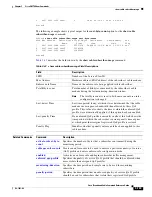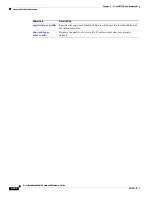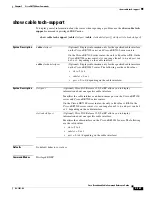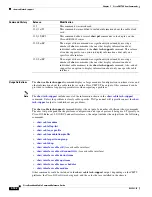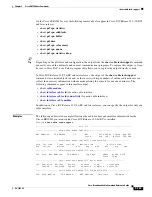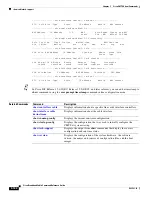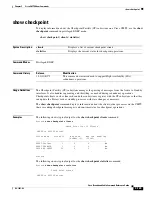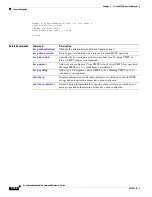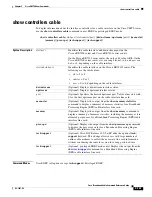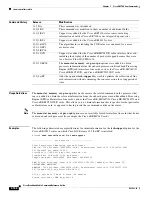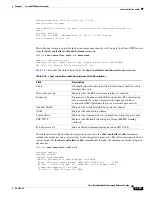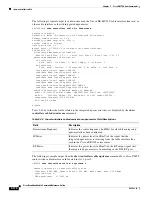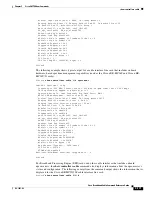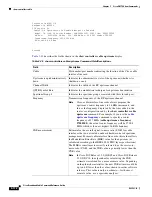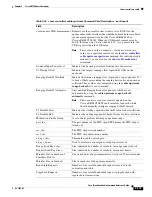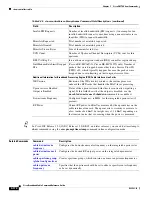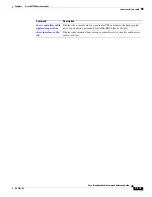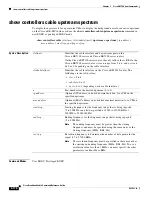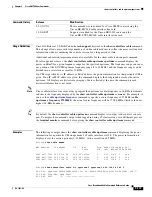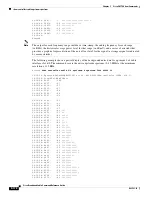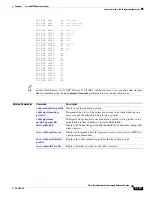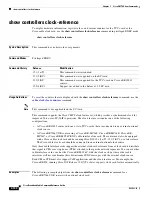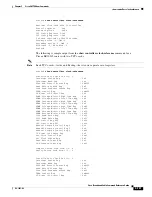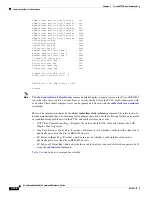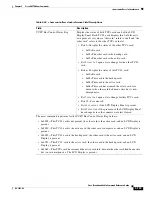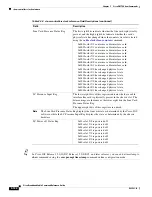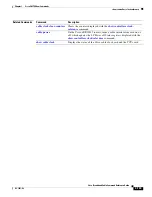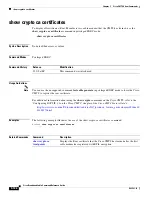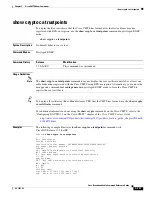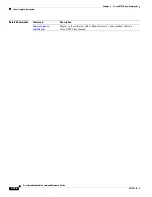
3-173
Cisco Broadband Cable Command Reference Guide
OL-1581-08
Chapter 3 Cisco CMTS Show Commands
show controllers cable
<card-name> CNR measurement Estimate for the overall carrier-to-noise ratio (CNR) for the
upstream for cable interfaces that include onboard hardware-based
spectrum management (such as the Cisco uBR-MC16S or
Cisco uBR-MC5X20S). When the CNR measurement exceeds
40 dB, this line states “better than 40 dB.” As a general rule, the
CNR is greater than the SNR value.
Note
This value is only an estimate—for the most accurate
value, use a spectrum analyzer or use the
show controllers
cable upstream spectrum
command. For individual cable
modems, you can also use the
show cable modem cnr
command.
Nominal Input Power level
Indicates the desired power level coming into the receiver.
Tx Timing Offset
Indicates the largest ranging offset reported by CMs on the
upstream.
Ranging Backoff Start/End
Indicates how many ranging slots (expressed as an exponent of 2)
to back off before resending the ranging bursts after an upstream
collision. These values are configured using the
cable upstream
range-backoff
start end
command.
Ranging Backoff Automatic
Start and End Ranging Backoff exponents, which are set
automatically, using the
cable upstream range-backoff
automatic
command.
Note
These counters are not accurately updated on the
Cisco uBR-MC5X20S cable interface line card, which
should manually configure ranging backoff instead.
Tx Backoff Start
Indicates the starting exponential backoff value for data collisions.
Tx Backoff End
Indicates the ending exponential backoff value for data collisions.
Modulation Profile Group
A set of burst profiles defining an upstream range.
part_id=
The part number of the PHY chip. FFFF means the PHY chip is
turned off.
rev_id=
The PHY chip revision number.
rev2_id=
The PHY chip subrevision number.
nb_agc_thr=
Threshold used to control gain.
nb_agc_nom=
Used to accelerate convergence of input power level.
Range Load Reg Size=
Size, indicated by number of symbols, for range request bursts.
Request Load Reg Size=
Size, indicated by number of symbols, for request bursts.
Minislot Size in number of
Timebase Ticks is
Size in tick units of upstream minislot. A tick is 6.25 microseconds.
Minislot Size in Symbols
Size in symbols of the upstream minislot.
Bandwidth Requests
Number of successful bandwidth requests received in the
contention minislots.
Piggyback Requests
Number of successful bandwidth requests piggybacked with
regular data transmissions.
Table 3-45 show controllers cable upstream Command Field Descriptions (continued)
Field
Description

